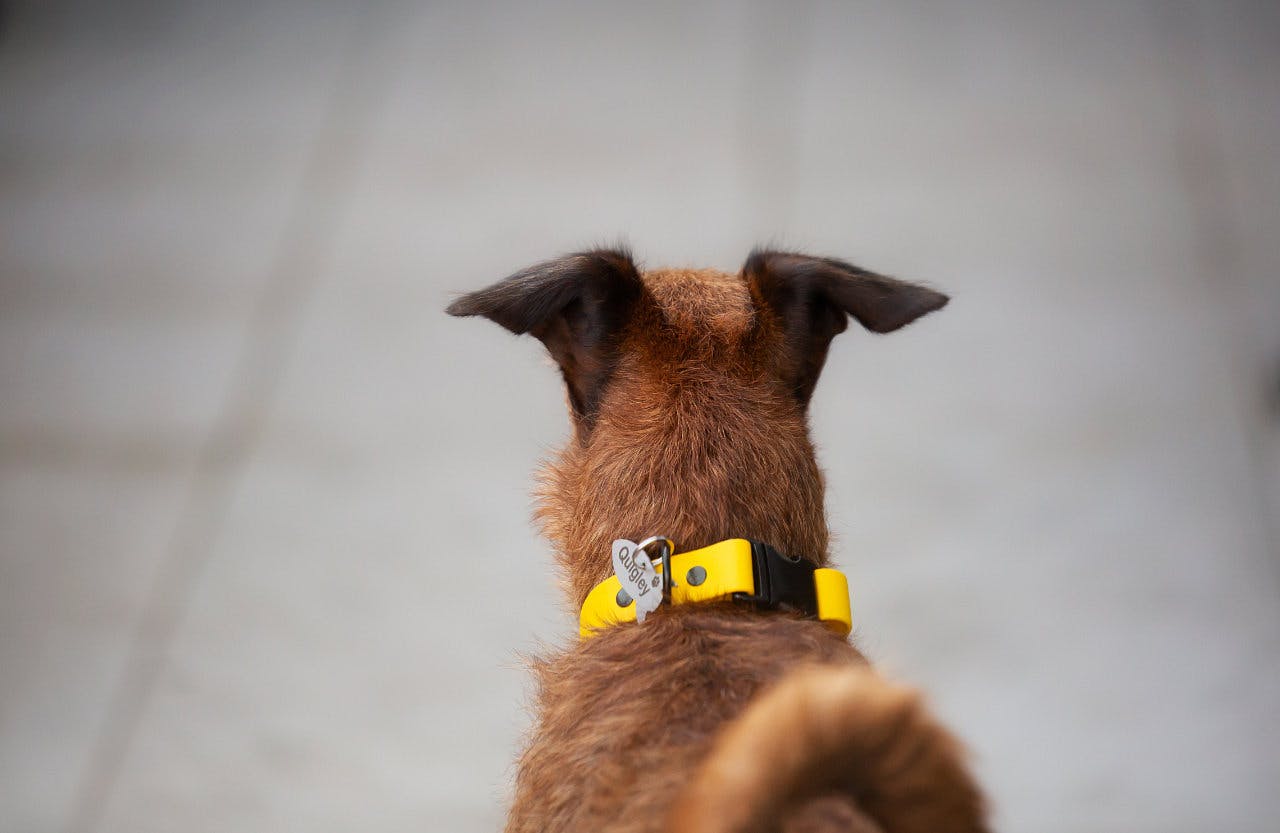Made in New Zealand
Global Shipping
Current production time 1-3 days
How do I show people that my dog is anxious?
It can be challenging to manage an anxious dog in public - luckily, there's a simple and easy way to tell the outside world that your dog is anxious and needs space.

Many of our modern dogs suffer from anxiety. But gaining a better understanding of the condition, and finding effective short and long-term approaches, can help to both manage and alleviate the issue.
When dogs experience anxiety, they are anticipating unknown or imagined future dangers. The three most common types of anxiety are fear, separation and age-related. In this discussion we will focus on fear-related anxiety.
In the moment, fear-related anxiety is usually driven by some sort of environmental stimuli (or trigger) such as strange people and animals, loud noises, pungent smells, and unfamiliar sensations. The fear trigger might be something new or novel, or something associated with an unpleasant past event (such as a painful vet procedure or being attacked by another dog). If a dog is not adequately ‘socialised’ with the outside world when they're young, they are constantly experiencing environmental stimuli as new and frightening. This is why it is critically important to expose your puppy to a wide range of sights, sounds, smells, people and animals before the age of 16 weeks.
What are the signs of fear-related anxiety?
The ‘language of dog’ is not always easy to understand and the clinical signs of anxiety vary depending on severity. A dog experiencing mild anxiety may display behaviours such as shaking, tail-tucking, cowering, avoidance (turning away) and hiding. While a dog suffering extreme anxiety may demonstrate panting, pacing, aggression, whining, barking, excessive drooling or licking, and active escape behaviour.
It's also worth noting that any fear or anxiety will be further amplified in a dog that is unwell or experiencing physical pain.
How do I show people that my dog is anxious?
It can be tough to manage an anxious dog in the outside world. Luckily, there's a well understood and accepted ‘colour code’ for anxious dogs - the colour yellow. A yellow collar, lead, ribbon, bandanna, or strip can be used to communicate to the outside world that your dog is anxious and needs space. This is an internationally accepted convention, which has also been widely adopted within New Zealand and Australia.
While we appreciate that a ribbon is cost-effective, at Led & Collared® we prefer a longer lasting, better looking, and more visually obvious solution! We recommend use of a yellow collar and/or lead to show others that your dog is anxious. Almost all our collars and leads are available in yellow or with yellow accent. Our Double Collar is pictured below - this collar has a clear 'strip-like' effect.
What’s the best way to manage anxiety?
As an immediate response, don’t panic or make a fuss. Fussing and comforting your dog like a child will only serve to reinforce their behaviour. You need to show him/her that you’ve got the situation under control, so calmly remove yourself and your dog from the situation. Try to switch his/her focus onto something familiar by asking for a routine behaviour such as ‘sit’ or ‘down’ and reward him/her for complying.
In the longer-term, we recommend addressing anxiety with a combination of gentle desensitization, counter-conditioning and prevention. Where desensitization is achieved via repeated, controlled exposure to a low-level version of the stimulus; and counter-conditioning via training the dog to perform a positive behaviour in place of fear/anxiety (such as the sit or down routine already described).
Prevention can be achieved by learning to recognise your dog’s unique body language; slowly socialising your dog to new people, animals, and places; investing time and effort into obedience training; ensuring your dog gets regular exercise; providing your dog with good nutrition (a fresh species appropriate diet); and avoiding situations that you know will be especially problematic for your dog.
- April 2023
Author: Lorna Brennan, Managing Director, Led & Collared®
© 2023 Led & Collared®. All Rights Reserved. Wellington, New Zealand.






